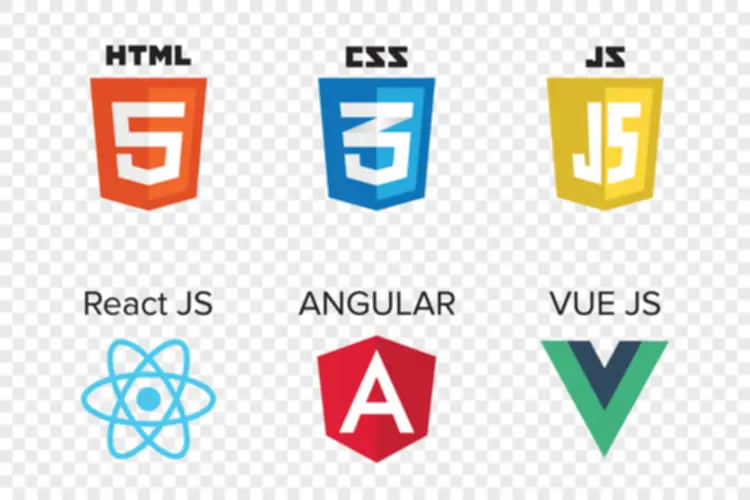by Saad
- Software development
PWAs are accessed via an online browser, whereas React Native apps are put in on a tool like a native app. In abstract, React Native presents a native-like consumer interface, high native vs progressive web apps performance, third-party library help, and cross-platform compatibility. However, it may require a greater investment in learning and will have limitations in accessing sure native device APIs.
- Both PWAs and React Native have their strengths and trade-offs when it comes to consumer expertise.
- This weblog will compare PWAs, native apps, and hybrid apps across varied factors to assist you decide the finest choice for your needs.
- Combining the best of websites and apps, PWAs provide larger flexibility to companies, and better experiences to customers.
- Discover the top tech stacks for software improvement designed to boost your expertise and data.
Pwa Vs Native App: Comparison From A Business Perspective
Magento is an open-source platform that helps retailers create eCommerce web sites, released on March 31, 2008, by Varien and developed on Zend Framework. There are currently about 270,000 eCommerce websites working on Magento in 2022. When selecting between them, you should consider the aspects each possibility excels in, and the way they fit in along with your vision of your app. In addition, a progressive internet app doesn’t take up as much house as an app. With simply an URL, guests can entry and share the app with their associates. There’s additionally no have to update the app, as it at all times shows the newest version upon launching.
Examples Of The Two Technologies

The cause is the interface of PWA—it seems like a cell application—fast and easy (not like adaptive web sites on smartphones normally do). Herewith, it’s still an internet utility, i.e. the internet site in a mobile browser. And it is a lot simpler to attract folks into the browser than persuade them to download the app. So in abstract, PWAs have the lowest maintenance overhead, followed by native apps. In Hybrid app growth, numerous web technologies are used, corresponding to HTML, CSS, and JavaScript together with frameworks like Apache Cordova, Ionic, or React Native. The net codebase is wrapped in a native container that has entry to native APIs via JavaScript bridges.
Summarizing: Progressive Internet Apps Vs Native Apps
Plus, the approval half from app shops can take extra time than anticipated. A PWA is an online app that gives native-like features, improved performance, and offline access. An SPA is an online app that masses a single HTML page and dynamically updates the content as customers interact with the app. While PWAs can include SPA-like performance, additionally they provide additional options not sometimes found in SPAs.

Obtain & Installation: Pwa Has Straightforward Set Up With Out Download
It’s imperative that your app is straightforward to notice, useful, and unique if you would like to stand out from the crowd. While PWAs are gaining recognition, it’s unlikely they may fully substitute native apps in the near future. Looking at big corporations like X/Twitter, Reddit, Instagram, all of them have PWAs too, but they do not appear to be nearly pretty a lot as good as their native apps either. They are/feel way slower and I suppose that is the principle reason for the completely different feeling. TechTarget says, “Hybrid apps are basically internet apps that have been put in a native app shell.” These apps are written in cross-platform languages like HTML5, CSS, and JavaScript. In 2024, the boundary was further blurred when our staff created Natively.
And as a end result of an app must cross the app store’s safety requirements to get revealed, customers usually have a tendency to trust an app. With better entry to system hardware, you possibly can count on native apps to be extra features-packed and extra built-in inside the system. This potentially results in more stability, security, and more options that require cross-app communication. From our experience as an expert Magento PWA solution, we will see that that is the results of PWAs being coded utilizing outdated strategies of animation dealing with. For a native app, a company would wish to work on the event project twice – one for iOS and one for Android, if they desire to have their app revealed on each platforms.
PWAs can load sooner than native apps because they use service staff to cache information. However, when it comes to actual efficiency, corresponding to animations and transitions, native apps sometimes perform better as a result of they’re built in languages immediately supported by the platform. While Java or Kotlin programming language is used for native app development for Android, Objective-C or Swift is used for developing apps for iOS users. Two completely different growth tech stacks imply more people on the group and an increase in cost.
Whatever you select – Android or iOS app development, your app may have a non-reusable codebase. In the case of native apps, you don’t must go far for example – a calculator or a weather app originally put in in your system are native ones. PWAs offer options similar to native apps, together with the ability to be saved on the house display screen, work offline, ship push notifications, and make the most of some device features. Another important nuance we should point out right here is that with native apps, you can construct and integrate safety features immediately into the app, which is inconceivable with progressive web apps. For instance, you can integrate a VPN into your mobile application, whereas PWAs don’t let you try this. That’s why native apps are a go-to alternative for banks, monetary institutions, healthcare suppliers, and different organizations that cope with delicate information.

This characteristic helps in re-engaging users by sending timely updates or notifications. PWAs prioritise efficiency, making certain quick loading occasions and easy interactions. This is essential for offering a positive person experience and retaining user engagement.
Native apps can implement strong security measures like two-factor authentication and secure fee processing within a managed app store setting. PWAs must also ensure a safe setting, usually counting on web-based security measures like HTTPS and multi-factor authentication. Native apps are recognized for his or her performance capabilities and seamless integration with system hardware functionalities.

On the opposite hand, a native app integrates seamlessly as part of the smartphone once installed. Also, native cell functions are extra highly effective and rating excessive on performance because of the platform-centric code. With extra consideration on mobile, customers love companies which have cellular apps and promise an excellent expertise on cell. Native apps offer an incredible end-user expertise – higher cell UX and higher options, but PWAs assist you to ship sooner, hold prices beneath control and attain out to customers on multiple platforms.
Although a local app could allow you to configure more superior features, it additionally means extra money and time wanted to invest. Now, as you might have learn all the basic info about progressive net apps vs native apps, let’s determine, which app options win. Native apps are being created for a particular platform and are adjusted to the platform extra efficiently to carry out higher. Also, Native apps have slightly dependency and interact with the opposite native APIs. A internet app manifest file is half of PWAs capability to be put in to a device’s home display without being uploaded from the app retailer.
When contemplating the efficiency of mobile apps developed using Progressive Web Applications (PWAs) and React Native, there are some key elements to maintain in mind. React Native apps, leveraging native rendering APIs, have a tendency to supply better performance compared to PWAs. This benefit interprets to sooner and smoother app efficiency, enhancing the general person experience. Of course, PWAs also have their disadvantages, with performance being crucial of them. With virtually 7 billion smartphone customers worldwide, it’s no surprise that companies strive to determine a strong cell presence.



